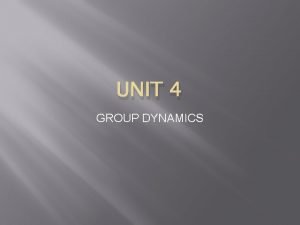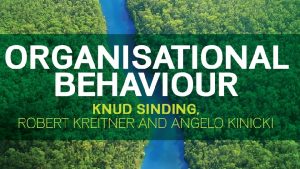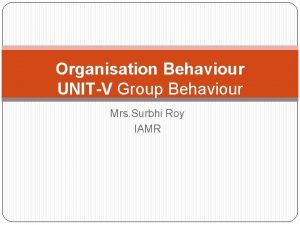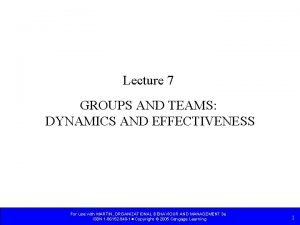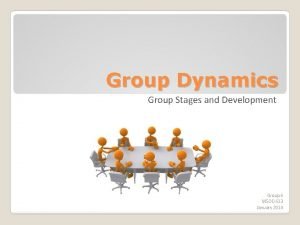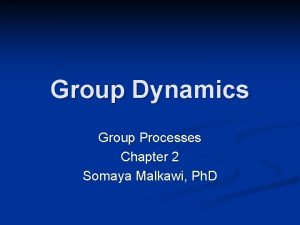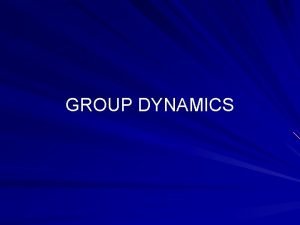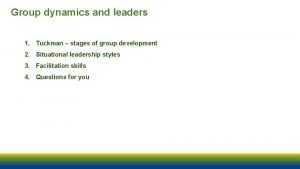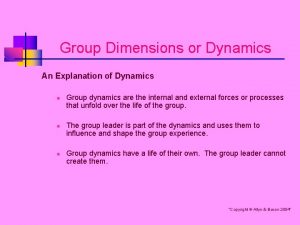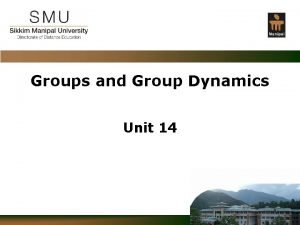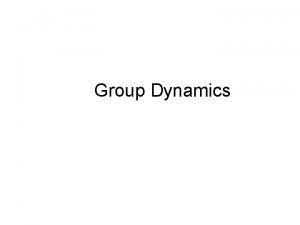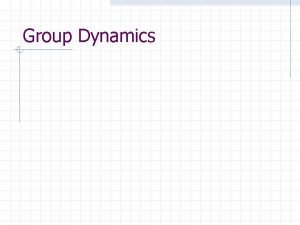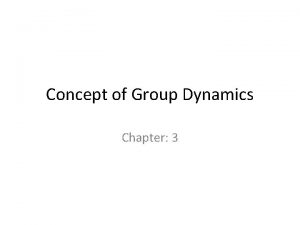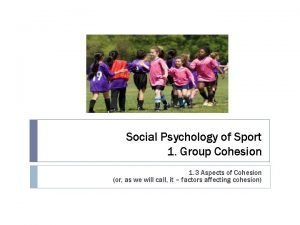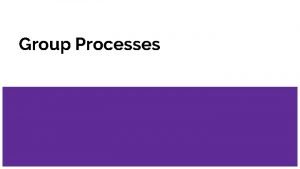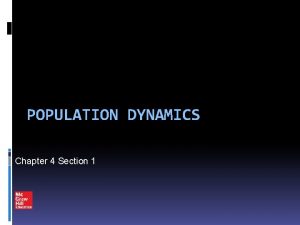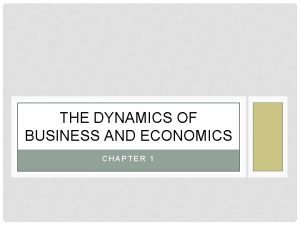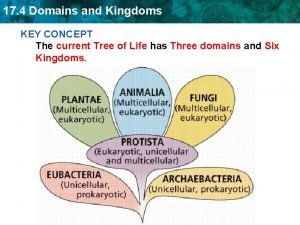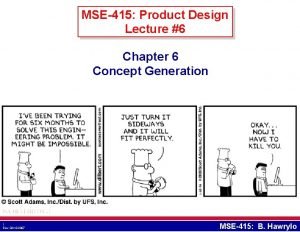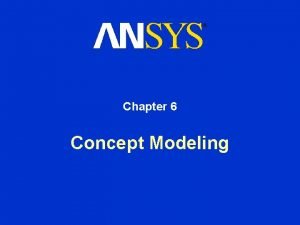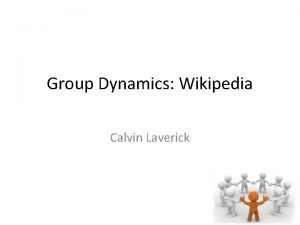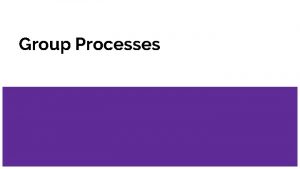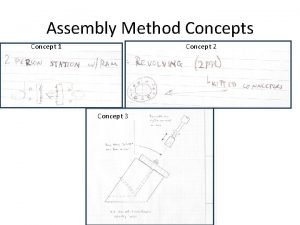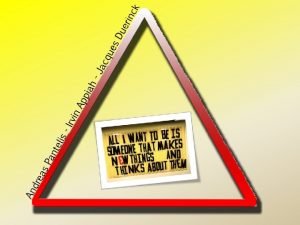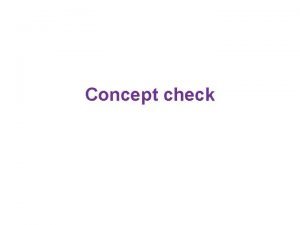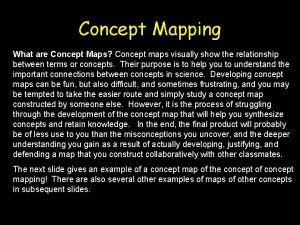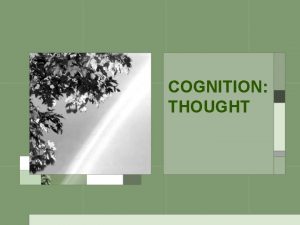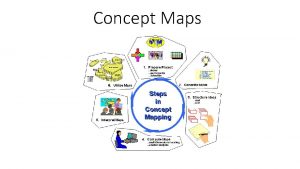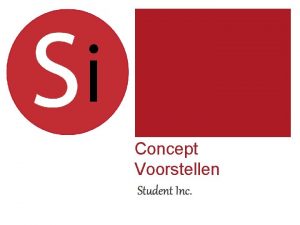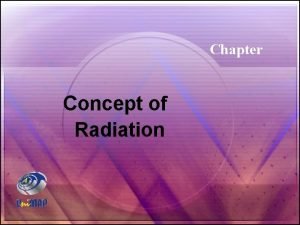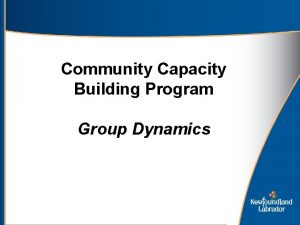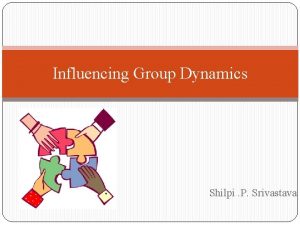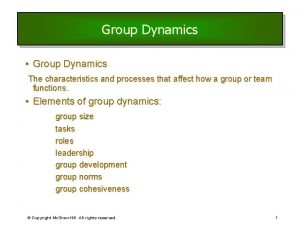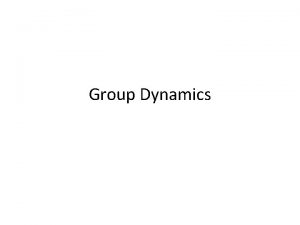Concept of Group Dynamics Chapter 3 Group Dynamics











![In 1958, Harvard psychologist, Herbert Kelman identified three broad varieties of social influence. [2] In 1958, Harvard psychologist, Herbert Kelman identified three broad varieties of social influence. [2]](https://slidetodoc.com/presentation_image_h2/64fc89fff873619a91f92a8c54db7454/image-12.jpg)






![Hawthorn Effect • The term was coined in 1958 by Henry A. Landsberger, [5] Hawthorn Effect • The term was coined in 1958 by Henry A. Landsberger, [5]](https://slidetodoc.com/presentation_image_h2/64fc89fff873619a91f92a8c54db7454/image-19.jpg)
![• The Hawthorne effect (also referred to as the observer effect[1][2]) is a • The Hawthorne effect (also referred to as the observer effect[1][2]) is a](https://slidetodoc.com/presentation_image_h2/64fc89fff873619a91f92a8c54db7454/image-20.jpg)































- Slides: 51

Concept of Group Dynamics Chapter: 3

Group Dynamics • The term group dynamics was originally used by Kurt Lewin (1948) to described what went on in small groups. Lewin was especially interested in how group climates and processes influence the interactions of group members and ultimate outcomes. • He thought many factors contributed to the overall concept of group dynamics, for instance, group purpose, communication patterns, power/control issues, and member’s roles. For instance, if the group’s purpose is to fight a common enemy and save a country, the intensity, roles communication procedures, control issues, and interactions of its members are quite different from those of a group formed to study the influences of modern art in conservative communities. (Group Work a counseling specialty P. 27)

• Lewin used the term group dynamics to stress the powerful impact of these complex social processes on group members. It refers not only to the powerful processes that occur within groups but also to the scientific study of these processes. (Group dynamics by Donelson) • Lewin is generally given the credit for coining and popularizing the term group dynamics. To Lewin group dynamics is both the powerful processes that influence individuals when in group situations and the study of these processes. (Group dynamics by Donelson) • Group dynamics seems to have two sides. To some, it is the field of Sociology: It focuses on the groups of people and how these groups influence and are influenced by social forces. (Group dynamics by Donelson)

• In Psychological point of view, the focus is on individual’s thoughts, actions, and emotions, and these individuals just happen to be in groups rather than alone.

• 1. the branch of social psychology that studies the psychodynamics of interaction in social groups. • 2. According to Kurt Lewin, groups tends to be powerful rather than weak, active rather than passive, fluid rather than static, and catalyzing rather than reifying. 3. According to Jacobs, Harvill, and Masson (1994) who simply describe group dynamics as “forces that are operating in a group”. Definition of Group dynamics

Functional components of Group dynamics 1. Group as a whole (Physical and non-Physical structure) – Physical structure consists of seating arrangements, architectural design of the room/hall, other related tangible things – Non Physical structure consists of the social roles, statuses, types of social interaction, communication etc 2. Group members: each and every group members have equal importance in the group dynamics. The member's attitude, level of perception, and participation are very important. Some group members are facilitative in nature while some are problematic for the smooth functioning of group dynamics.

• 3. Group leadership: authoritative, democratic or lassies faire • 4. Group Work Process: Planning for the group, methods being used for the processing of groups. there is difference between group work process and group process. Former means a conscious efforts while the latter means simultaneous process which occur automatically when two or more person get together and share experiences.

Concepts of Group Dynemics. Social Ecology • Social ecology is the science of relationship between human population, their communities and environment. • Many environmental groups are specifically concerned about the relationship of humans to our world resources. More specifically, and ecological perspective in social work means looking at the interdependencies of a client or client system and other social systems in its environment.

• It tries to improve the coping pattern of the people in their environment to obtain a better match between an individual’s need and characteristics of his or her environment. • People interact with many systems like family, education, social service system, political, religious, goods and services, employment services.

In Ecological Model Social Work focus on three main areas. • It focus on the person and seek to develop problem- can focus on the relationship between a person and the solving, coping, and developmental capacities. • Second, it can focus on the relationship between person and the system he or she interact with needed resources, services and opportunities. • It can focus on the system and seek to reform them to meet the needs of individuals more effectively.

Social Influence • Social influence occurs when one's emotions, opinions, or behaviors are affected by others. Social influence takes many forms and can be seen in conformity, socialization, peer pressure, obedience, leadership, persuasion. • The term conformity is often used to indicate an agreement to the majority position, brought about either by a desire to ‘fit in’ or be liked (normative) or because of a desire to be correct (informational), or simply to conform to a social role (identification). • http: //www. simplypsychology. org/conformity. html
![In 1958 Harvard psychologist Herbert Kelman identified three broad varieties of social influence 2 In 1958, Harvard psychologist, Herbert Kelman identified three broad varieties of social influence. [2]](https://slidetodoc.com/presentation_image_h2/64fc89fff873619a91f92a8c54db7454/image-12.jpg)
In 1958, Harvard psychologist, Herbert Kelman identified three broad varieties of social influence. [2] 1. Compliance is when people appear to agree with others, but actually keep their dissenting opinions private. 2. Identification is when people are influenced by someone who is liked and respected, such as a famous celebrity. 3. Internalization is when people accept a belief or behavior and agree both publicly and privately.

• Morton Deutsch and Harold Gerard described two psychological needs that lead humans to conform to the expectations of others. These include our need to be right (informational social influence), and our need to be liked (normative social influence). • Normative influence is the desire to meet other people’s expectations and to be accepted by others. Normative influence is an influence to conform to the positive expectations of others. In terms of Kelman's typology, normative influence leads to public compliance, whereas informational influence leads to private acceptance. •

• Informational influence is accepting and being persuaded by information provided by others. • Informational influence (or social proof) is an influence to accept information from another as evidence about reality.

Primary Affiliation Group • Primary group is basic and natural and we have no option to choose primary group e. g. relationship with parents. • Most of the learned behavior of individual is acquired through the interaction with the members of primary group, which last throughout the life of a person.

• Primary groups, such as family and friends, are small, long term • These groups are characterized by face-to-face interaction and high levels of cohesiveness, solidarity, and member identification. In many cases, individuals become part of primary groups involuntarily: Most are born into a family, which provides for their well-being until they can join other social groups. Other primary groups form when people interact in significant, meaningful ways for a prolonged period of time. Cooley (1909, p. 23) thought that primary groups protect members from harm, care for them when they are ill, and provide them with shelter and substenance.

• But he believed that their most important function was in creating a bridge between the individual and society at large: • Primary groups are primary in the sense that they give the individual his earliest and completest experience of social unity, and also in the sense that they do not change in the same degree as more elaborate relations, but form a comparatively permanent source out of which the latter are ever springing.

Secondary Affiliation Group • In secondary group relations of individuals are less personal and no emotional attachment with one another. • Their contact are casual and based on contract, when contract ends, the relationship ends e. g. interaction between employer and his employee, shopkeeper and customer. • Such groups are larger and more formally organized than primary groups, and they tend to be shorter in duration and less emotionally involving. However, secondary groups continue to define the individual’s place in the social structure of society
![Hawthorn Effect The term was coined in 1958 by Henry A Landsberger 5 Hawthorn Effect • The term was coined in 1958 by Henry A. Landsberger, [5]](https://slidetodoc.com/presentation_image_h2/64fc89fff873619a91f92a8c54db7454/image-19.jpg)
Hawthorn Effect • The term was coined in 1958 by Henry A. Landsberger, [5] when analyzing earlier experiments from 1924– 32 at the Hawthorne Works (a Western Electric factory outside Chicago). The Hawthorne Works had commissioned a study to see if their workers would become more productive in higher or lower levels of light. The workers' productivity seemed to improve when changes were made, and slumped when the study ended. It was suggested that the productivity gain occurred as a result of the motivational effect on the workers of the interest being shown in them.
![The Hawthorne effect also referred to as the observer effect12 is a • The Hawthorne effect (also referred to as the observer effect[1][2]) is a](https://slidetodoc.com/presentation_image_h2/64fc89fff873619a91f92a8c54db7454/image-20.jpg)
• The Hawthorne effect (also referred to as the observer effect[1][2]) is a type of reactivity in which individuals modify an aspect of their behavior in response to their awareness of being observed. It brings behavioral change due to an awareness of being observed, active compliance with the supposed wishes of researchers because of special attention received, or positive response to the stimulus being introduced.

• The Hawthorne effect is a psychological phenomenon that produces an improvement in human behavior or performance as a result of increased attention from superiors, clients or colleagues. In a collaborative effort, the effect can enhance results by creating a sense of teamwork and common purpose. In social networking, the effect may operate like peer pressure to improve the behavior of participants. • http: //whatis. techtarget. com/definition/Hawthor ne-effect

Functional components of Group dynamics 1. Group as a whole (Physical and non-Physical structure) • Structure of the group: refers to both the physical setup of a group as well as the interaction of each group member in relation to the group as a whole. • Both types of structures influence how successful or harmonious the group will be and whether individual or group objectives will be met. • Leaders and members have an ability to structure a group for better or worse. In this section, the physical structure of a group will be examined with the essence of group interaction.

• Physical structure consists of seating arrangements, architectural design of the room/hall, other related tangible things. • Social Psychologists believe that architectural design of hall or room has vital impact on the members behavior. If the structure of the hall suits the group purpose and nature, it will have positive impact and will lead to positive group dynamics and change. • The structure of the group should be sound proof, have proper lighting, and available technology according to the need, it will facilitate the group process. • Seating arrangement is one the most important part of physical structure.

• Many groups, regardless of purpose, use a CIRCLE format. In this configuration, all members have direct access to each other. They have implied equality in status and power. the disadvantage of this arrangement is the lack of a perceived leader in the structure unless the identified leader is active and direct. Overall, the circle lends itself to being a democratic structure for conducting group work and is probably the best structure way for ensuring equal “air time” for all group members. • Chain arrangement. People are positioned or seated along a line, often according to their rank in a group. Communication is passed from a person at one end of the configuration to a person at the other end through others.

• “U” shape arrangement • Theatre style: where they are seated in lines and rows. Because of the emphasis in many psycho educational groups on obtaining cognitive information, this arrangement may be useful.

• Non Physical structure consists of the social roles, statuses, types of social interaction, communication etc • Group interaction can be describe as the way members relate to each other. It consists of nonverbal and verbal behaviors and the attitudes that go with them. • Nonverbal behaviors make up “more than 50 % of the messages communicated in social relationships” and are usually perceived as more honest and less subject to manipulation than verbal behaviors. The four main categories of nonverbal behavior are body behaviors, interaction with the environment, speech, and physical appearance.

• Verbal behavior is also crucial in group dynamics. One of the most important variables n group work to track is who speaks to whom and how often each members speaks. • Value: the usefulness, importance of something, principles and beliefs about what is important in life and how people should behave.

2. Member’s roles & Group Dynamics • A role is conceived as “dynamics structure within an • individual (based on needs, cognition, and values), which usually comes to life under the influence of social stimuli or defined positions”. • The demonstration of role is based on the individual’s expectation of self and others and the interactions one has in particular groups and situations. For examples, a reflective and introverted person might take the role of a “group observer” in an active counseling group.

• Types of role: • One way to conceptualize most roles in groups is to view as primarily functioning in one of three: • FACILITAITVE/BUILDING ROLE • MAINTENANCE ROLE • BLOCKING ROLE • Facilitative role/building role: is one that adds to the functioning of a group in a positive and constructive way. Members who take on such a role may serve as: • Facilitator or encourager: in this position, individuals play the role of a counselor helper. They make sure everyone feels comfortable. Their motive often is keep the focus off themselves.

• • Initiators of actions & ideas Information seekers Opinion seekers coordinators Orientor's Evaluators Recorders • This role mainly focuses on helping everyone feel like a part of the group. Those members who function in this way help the group develop like a part of the group develop while keeping conflict to a minimum.

• A maintenance role: is one that contributor to the social emotional bonding of members and the overall well-being of the group. When interpersonal communication in the group is strained, there is a need to focus on relationships. Persons who take on such roles are social and emotionally oriented. They express themselves by being: Encouragers, harmonizes, compromisers, commentators, and followers. In group maintenance, group members are encouraged to openly express “both positive and negative feelings, supportive responses to members concerns and contributions, and acceptance of differences”.

Blocking role • It is essentially an anti group role. Individuals who take this role act as: • Aggressors, blockers, dominators, recognition seekers, and selfrighteous moralists.

Problems in carrying out roles • Sometimes there are problems in the fulfillment of roles. Both internal & external factors contribute to these problems, and there is seldom a simple cause. Four major forms of role transition. • In role collision: there is a conflict between the role an individual plays in the outside world (such as being passive observer) and the role expects within the group (such as being an active participant). • Role incompatibility, a person is given a role within the group (as being the leader) that he or she neither wants nor is comfortable exercising.

• Role Confusion: occurs when a group member (s) simply do not know what role to perform. This often happens is leaderless group where members do not know if they are to assertive in helping to establish an agenda or to be passive and just let the leadership emerge. • Role transition: a person is expected to assume a different role as the group progresses but does not feel comfortable doing so.

• Leadership (Group Leadership) Leadership has been described as the: “process of social influence in which one person is able to enlist the aid and support of others in the accomplishment of a common task”. "Leadership is ultimately about creating a way for people to contribute to making something extraordinary happen”

• Responsibilities and roles : • Responsibilities of leader in group situation: • Safety: it is the responsibility of the leader to provide security and safety to the group members from any undue influence. It may be from the side of organization or blockers. • Honesty : Honesty is the best policy for a leader. He or she has to be honest what he/she say and doing. It means there must be no contradiction between his/her words and action. He/she has to utilize the resources of the organization with honesty and with maximum benefit for the members.

• . if leader provide security to the group from any undue influence, it will develop a environment of trust. • Teach skills: imparting skills related to communication skill, decision making, crisis management, coping effectively with their interpersonal and interpersonal problems, to the Establish trust: group is the major responsibility of the leader.

• Role model: leader’s verbal & non-verbal behavior are very important & meaningful for the members. They take influence from each behavior and in practice in their practical life. • Provide balance: balance in relationship with the members is the important responsibility. it has taken from the principle of purposeful worker group relationship. , • Adapt to situation(s): leader has to be flexible and adaptive in nature. He has to mould himself/herself in all sort of situation whether it is crisis situation or normal situation. • Make decisions: making effective decision in normal and crisis situation is the prime responsibility of the leader.

• Provide motivation: leader motivate and inspire people by helping group members see the importance and higher good of the task Facilitate group interaction Be sensitive to needs of group Deal with expectations of others

l. Functions l. A. l of a Leader are categories in two groups: Task oriented functions: B. Relationship oriented functions. lalso known as “Transformational function”) focus upon the connections formed between leaders and followers. These leaders motivate and inspire people by helping group members see the importance and higher good of the task l

l. A. Task Oriented Functions/Behaviors • Information and Opinion Giver: Offers facts, opinions ideas, suggestions, and relevant information to help group discussion. • Information and Opinion Seeker: Asks for facts, information, opinions, ideas, and feelings from other members to help group discussion. • Starter: Proposes goals and tasks to initiate action within the group. • Direction Giver: Develops plans on how to proceed and focuses attention on the task to be done. • Summarizer: Pulls together related ideas or suggestions and restates and summarizes major points discussed. • Coordinator: Shows relationships among various ideas by pulling them together and harmonizes activities of various subgroups and members.

• Diagnose: Figures out sources of difficulties the group has in working effectively and the blocks to progress in accomplishing the group's goals • Energizer: Stimulates a higher quality of work from the group. • Reality Tester: Examines the practicality and workability of ideas, evaluates alternative solutions, and applies them to real situations to see how they will work. • Evaluator: Compares group decisions and accomplishments with group standards and goals.

l. B. Relationship oriented Functions/Behaviors • Encourager of Participation: • Harmonizer and Compromiser: Warmly encourages everyone to participate giving recognition for contributions, demonstrating acceptance and openness to ideas of others, is friendly and responsive to group members Persuades members to analyze constructively their differences in opinions, searches for common elements in conflicts and tries to reconcile disagreements.

• Tension Reliever: Eases tensions and increases the enjoyment of the group members by joking, suggesting breaks, and proposing fun approaches to group work. • Communication Helper: Shows good communications skills and makes sure that each group member understands what the other members are saying. • Evaluator of Emotional Climate: Asks members how they feel about the way in which the group is working and about each other, and shares own feelings about both.

• Process Observer: Watches the process by which the group is working and uses the observations to help examine group effectiveness. • Standard Setter: Expresses group standards and goals to make members aware of the direction of the work and the progress being made toward the goal and to get open acceptance of group norms and procedures.

• Active Listener: Listens and serves as an interested audience for other members, is receptive to others' ideas, goes along with the group when not in disagreement. • Trust Builder: Accepts and supports openness of other group members, reinforcing risk taking and encouraging individuality. • Interpersonal Problem Solver: Promotes open discussion of conflicts between group members in order to resolve conflicts and increase group togetherness

• Style of leadership • Authoritative: such leaders considered themselves as experts. They believe they understand group dynamics and are, therefore, able to best explain group and individual behavior. These leader interpret, five advice, and generally direct the movement of the group much like a parent controls the action fo the a child. Authoritarian leaders are often charismatic and manipulative. They demand obedience and expect conformity. • Democratic: such leaders group centered or nondirective. Leader serves as a facilitators of the group process and not as directors of it. They cooperate, collaborate and share responsibilities with the group. • Laissez Faire leader are leaders in name only. They fail to provide any structure or direction for their groups. Members are left with the responsibility of leading and directing. Some inexperienced group leaders choose this style in an attempt to be non threatening; others pick this style to avoid making any hard decisions and thereby increasing their popularity.

Theories of Leadership: 1. “Great Man” Theories: Great Man theories assume that the capacity for leadership is inherent – that great leaders are born, not made. These theories often portray great leaders as heroic, mythic, and destined to rise to leadership when needed. The term “Great Man” was used because, at the time, leadership was thought of primarily as a male quality, especially in terms of military leadership. 2. Trait Theories: Similar in some ways to “Great Man” theories, trait theory assumes that people inherit certain qualities and traits that make them better suited to leadership. Trait theories often identify particular personality or behavioral characteristics shared by leaders. But if particular traits are key features of leadership, how do we explain people who possess those qualities but are not leaders? This question is one of the difficulties in using trait theories to explain leadership.

3. Contingency Theories: • Contingency theories of leadership focus on particular variables related to the environment that might determine which particular style of leadership is best suited for the situation. According to this theory, no leadership style is best in all situations. Success depends upon a number of variables, including the leadership style, qualities of the followers, and aspects of the situation. 4. Situational Theories: • Situational theories propose that leaders choose the best course of action based upon situational variable. Different styles of leadership may be more appropriate for certain types of decision-making.

5. Behavioral Theories: • Behavioral theories of leadership are based upon the belief that great leaders are made, not born. Rooted in behaviorism, this leadership theory focuses on the actions of leaders, not on mental qualities or internal states. According to this theory, people can learn to become leaders through teaching and observation. 6. Participative Theories: • Participative leadership theories suggest that the ideal leadership style is one that takes the input of others into account. These leaders encourage participation and contributions from group members and help group members feel more relevant and committed to the decision-making process. In participative theories, however, the leader retains the right to allow the input of others.

7. Management Theories: • Management theories (also known as “Transactional theories”) focus on the role of supervision, organization, and group performance. These theories base leadership on a system of reward and punishment. Managerial theories are often used in business; when employees are successful, they are rewarded; when they fail, they are reprimanded or punished. 8. Relationship Theories: • Relationship theories (also known as “Transformational theories”) focus upon the connections formed between leaders and followers. These leaders motivate and inspire people by helping group members see the importance and higher good of the task. Transformational leaders are focused on the performance of group members, but also want each person to fulfill his or her potential. These leaders often have high ethical and moral standards.
 True self and ideal self
True self and ideal self Contoh marketing concept
Contoh marketing concept Crm user group
Crm user group Function of group dynamics
Function of group dynamics Reasons for joining groups in organisational behaviour
Reasons for joining groups in organisational behaviour What is group dynamics in organisational behaviour
What is group dynamics in organisational behaviour Bion group dynamics
Bion group dynamics Sector d group chapter 3
Sector d group chapter 3 Model of group dynamics
Model of group dynamics Bion group dynamics
Bion group dynamics Function of group dynamics
Function of group dynamics Maypole group interaction
Maypole group interaction 5 stages of group dynamics
5 stages of group dynamics Group dynamics examples
Group dynamics examples Group dynamics definition
Group dynamics definition Ib group dynamics
Ib group dynamics Group dynamics definition
Group dynamics definition Types of group dynamics
Types of group dynamics Inhibited group dynamics
Inhibited group dynamics Group dynamics definition
Group dynamics definition Small group dynamics
Small group dynamics Maypole interaction pattern
Maypole interaction pattern Yalom group dynamics
Yalom group dynamics Dynamics ax edi
Dynamics ax edi Axug 2018
Axug 2018 Factors affecting cohesion in sport
Factors affecting cohesion in sport Group dynamics examples
Group dynamics examples Group processes and dynamics
Group processes and dynamics Fundamental attribution error
Fundamental attribution error Chapter 4 section 1 population dynamics
Chapter 4 section 1 population dynamics Cultural dynamics in assessing global markets
Cultural dynamics in assessing global markets Competitive dynamics examples
Competitive dynamics examples Chapter 4 population ecology answer key
Chapter 4 population ecology answer key Population ecology section 1 population dynamics
Population ecology section 1 population dynamics Chapter 4 section 1 population dynamics
Chapter 4 section 1 population dynamics Statics chapter 4
Statics chapter 4 Chapter 1 the dynamics of business and economics
Chapter 1 the dynamics of business and economics Chapter 1 the dynamics of business and economics
Chapter 1 the dynamics of business and economics A crane
A crane Old concept of marketing
Old concept of marketing Chapter 11 genetic disorders concept mapping
Chapter 11 genetic disorders concept mapping Chapter 34 circulation in humans concept mapping answer key
Chapter 34 circulation in humans concept mapping answer key Concept mapping chapter 28 fishes and amphibians
Concept mapping chapter 28 fishes and amphibians Chapter 28 fishes and amphibians concept mapping answer key
Chapter 28 fishes and amphibians concept mapping answer key Concept mapping chapter 28 fishes and amphibians
Concept mapping chapter 28 fishes and amphibians Bow wave aircraft
Bow wave aircraft 3 domains and 4 kingdoms
3 domains and 4 kingdoms New concept english book 3 answers
New concept english book 3 answers Chapter 34 section 1 the circulatory system
Chapter 34 section 1 the circulatory system Crossing over during prophase 1
Crossing over during prophase 1 New concept chapter 6
New concept chapter 6 Good to great 3 circles
Good to great 3 circles



